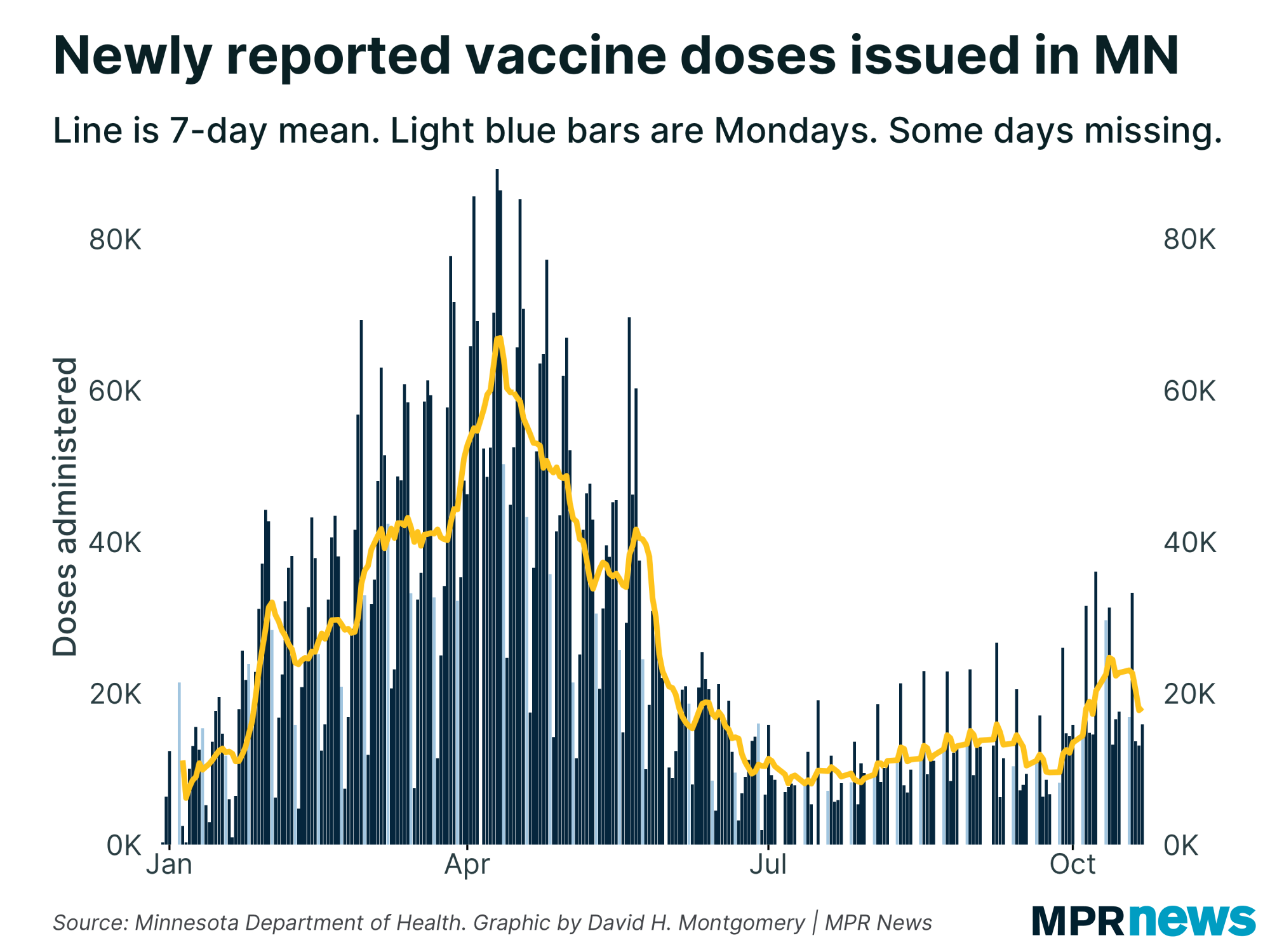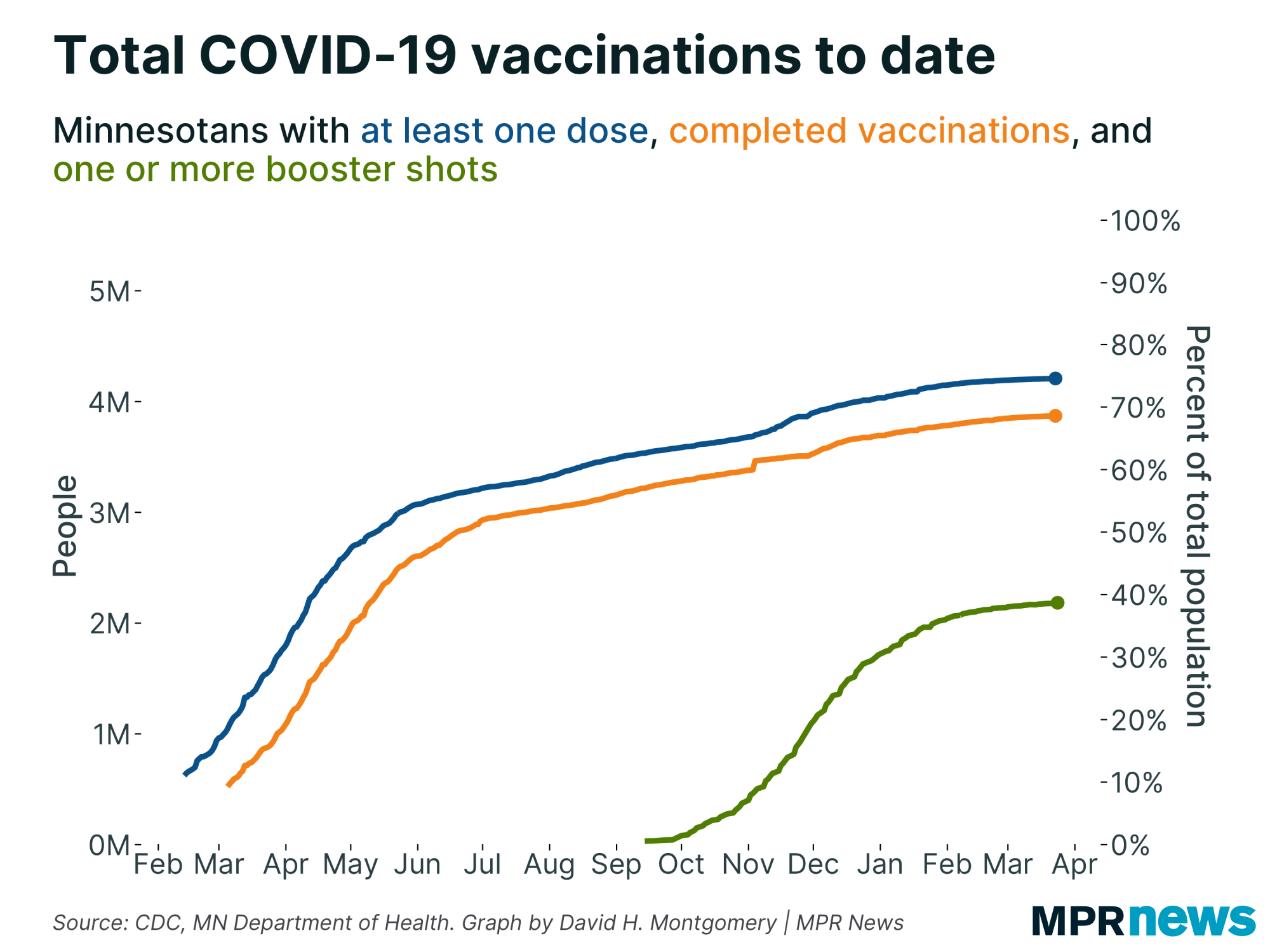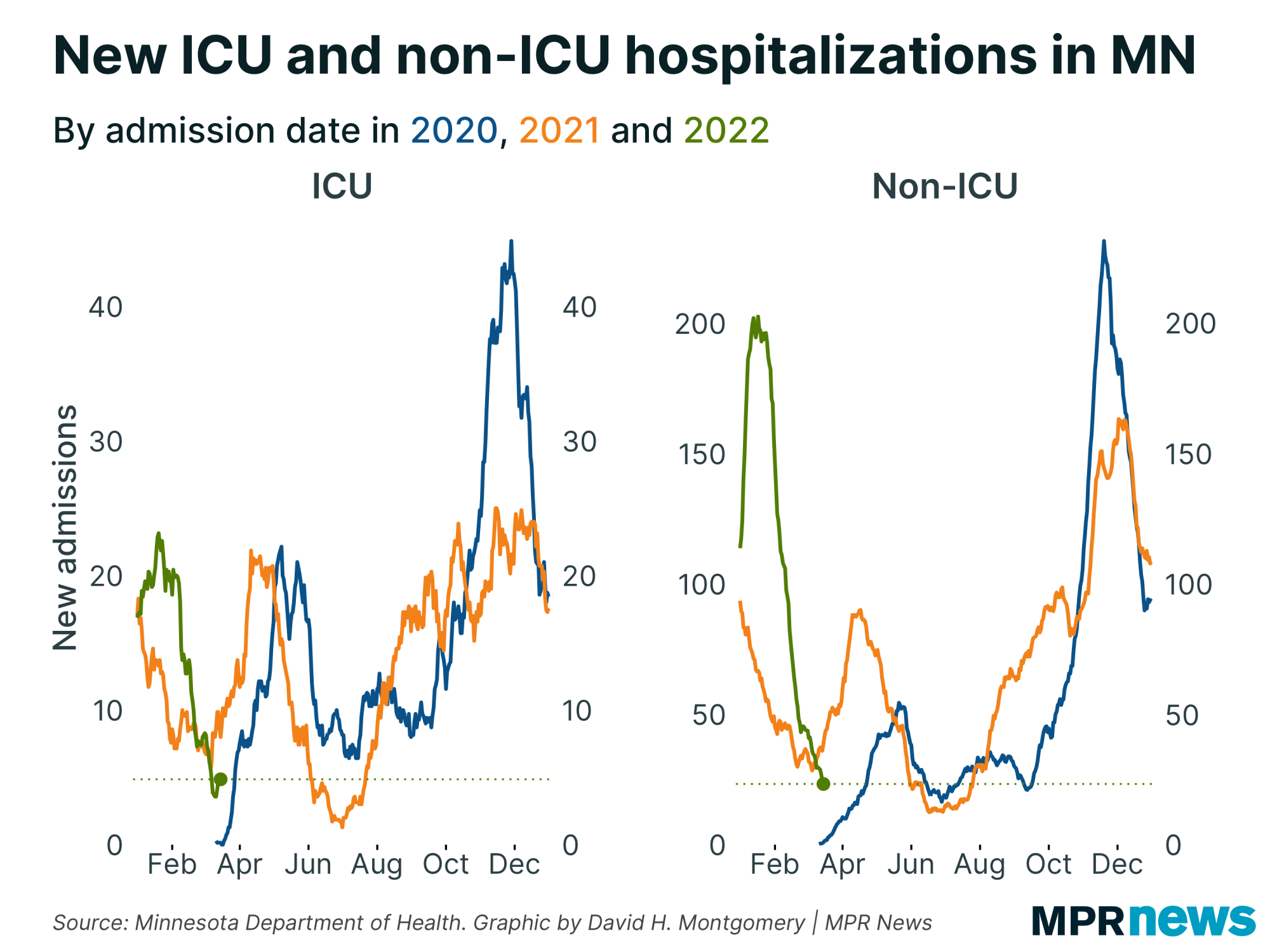March 1 update on COVID-19 in MN: Vaccination upswing; pandemic picture solid

Go Deeper.
Create an account or log in to save stories.
Like this?
Thanks for liking this story! We have added it to a list of your favorite stories.
3 things to know:
Vaccinations trending higher
45,000+ doses of J&J vaccine to arrive in Minnesota this week
Hospitalizations, case counts stay modest
Updated: 5:40 p.m.
Minnesota’s upbeat COVID-19 trends from February are spilling into March. Health Department data shows the state’s vaccination effort on an upswing with nearly 33,000 more vaccinations reported, significantly higher than Monday last week.
The new counts follow a weekend where officials reported consecutive record days of vaccinations, pushing the trend line higher following weeks of flat or falling data.
Officials were hoping the arrival of shipments delayed by the recent countrywide cold snap atop the state’s regular allotment of doses would start to show up in daily vaccinations counts. That appears to be happening.

About 16.2 percent of Minnesotans — more than 900,000 people — had received at least one dose as of Monday’s update, with about 8.4 percent completely vaccinated.
Turn Up Your Support
MPR News helps you turn down the noise and build shared understanding. Turn up your support for this public resource and keep trusted journalism accessible to all.

More than 52 percent of Minnesotans 65 and older have received at least one shot currently, according to Health Department calculations. That’s important since Gov. Tim Walz has said the state will expand vaccination eligibility once 70 percent of that older population receives a first dose.

Minnesota currently ranks 16th among states in doses administered per 100,000 people, according to data collected by the federal Centers for Disease Control and Prevention.
Walz last week said every Minnesotan should be able to get a COVID-19 vaccine shot by the summer. At the current pace, 80 percent of Minnesotans 16 and older would be able to get a shot by August.
There’s reason to believe the vaccination rate might continue to rise with the addition of the newly approved Johnson & Johnson vaccine, which only requires one dose. More than 45,000 doses of the newly approved vaccine should arrive in Minnesota this week, state health officials said Monday.
Metrics relatively stable
While the pace of vaccinations is picking up, Minnesota’s COVID-19 numbers show the state holding fairly steady in a good way.
Hospitalization rates remain encouraging and remain at levels last seen before the late-fall surge in cases. The Health Department on Monday reported 230 people in Minnesota hospitals with COVID-19, with 47 needing intensive care.

Known, active cases came in at 7,097, continuing a trend that stayed fairly stable through February and remains down dramatically from late November and early December, when active cases hovered around 50,000.

Three newly reported deaths raised Minnesota’s toll to 6,486. Among those who’ve died, about 63 percent had been living in long-term care or assisted living facilities; most had underlying health problems.

The state has recorded 485,230 total confirmed or probable cases so far in the pandemic, including 636 reported Monday. About 97 percent of Minnesotans known to be infected with COVID-19 in the pandemic have recovered to the point where they no longer need to be isolated.

Cases spread across age groups, regions
People in their 20s still make up the age bracket with the state’s largest number of confirmed cases — more than 91,000 since the pandemic began, including 48,000 among people ages 20 to 24.

The number of high school-age youth confirmed with the disease has also grown, with more than 37,000 total cases among those ages 15 to 19 since the pandemic began.
With kids increasingly returning to school buildings and sports, Minnesota public health officials are urging Minnesota families with children to get tested every two weeks for COVID-19 now until the end of the school year.
Although young people are less likely to feel the worst effects of the disease and end up hospitalized, experts worry youth will spread it unknowingly to older relatives and members of other vulnerable populations.
People can have the coronavirus and spread COVID-19 when they don’t have symptoms.
Regionally, most parts of Minnesota are down significantly from the late November and early December spike, as well as a smaller January uptick.

Caseloads still heaviest among people of color
In Minnesota and across the country, COVID-19 has hit communities of color disproportionately hard in both cases and deaths. That’s been especially true for Minnesotans of Hispanic descent for much of the pandemic.

Even as new case counts continue to track well below their late November, early December peaks, the data shows Latino people continue to be hit hard.
Distrust of the government, together with deeply rooted health and economic disparities, have hampered efforts to boost testing among communities of color, officials say, especially among unauthorized immigrants who fear their personal information may be used to deport them.
Distrust by communities of color “is the thing that has plagued us for some time,” Walz said last week at a briefing promoting vaccinations for people of color.
Health Commissioner Jan Malcolm said that it’s been a “real problem” not having data broken down by race and ethnicity but that the state may have data to share soon.
The Associated Press has contributed to this report.
Correction (March 5, 2021): An earlier version of this story described the total vaccinations as a percentage of Minnesota’s 16 and older population. The percentage includes the entire population.
COVID-19 in Minnesota
Data in these graphs are based on the Minnesota Department of Health's cumulative totals released at 11 a.m. daily. You can find more detailed statistics on COVID-19 at the Health Department website.
Top headlines
Some MN school districts will bring older learners back later than Walz wanted: Minnesota’s three largest districts have announced plans to return middle and high school students to in-person learning. But many students won’t transition to new in-person schedules until after spring break.
Are you vaccinated? Here’s what to know about post-vaccination risks: As the COVID-19 vaccination rate ticks upward, many people are wondering if it’s safe to see their families or if they should continue to wear masks. Two experts shared their tools for understanding the science and assessing risks.


